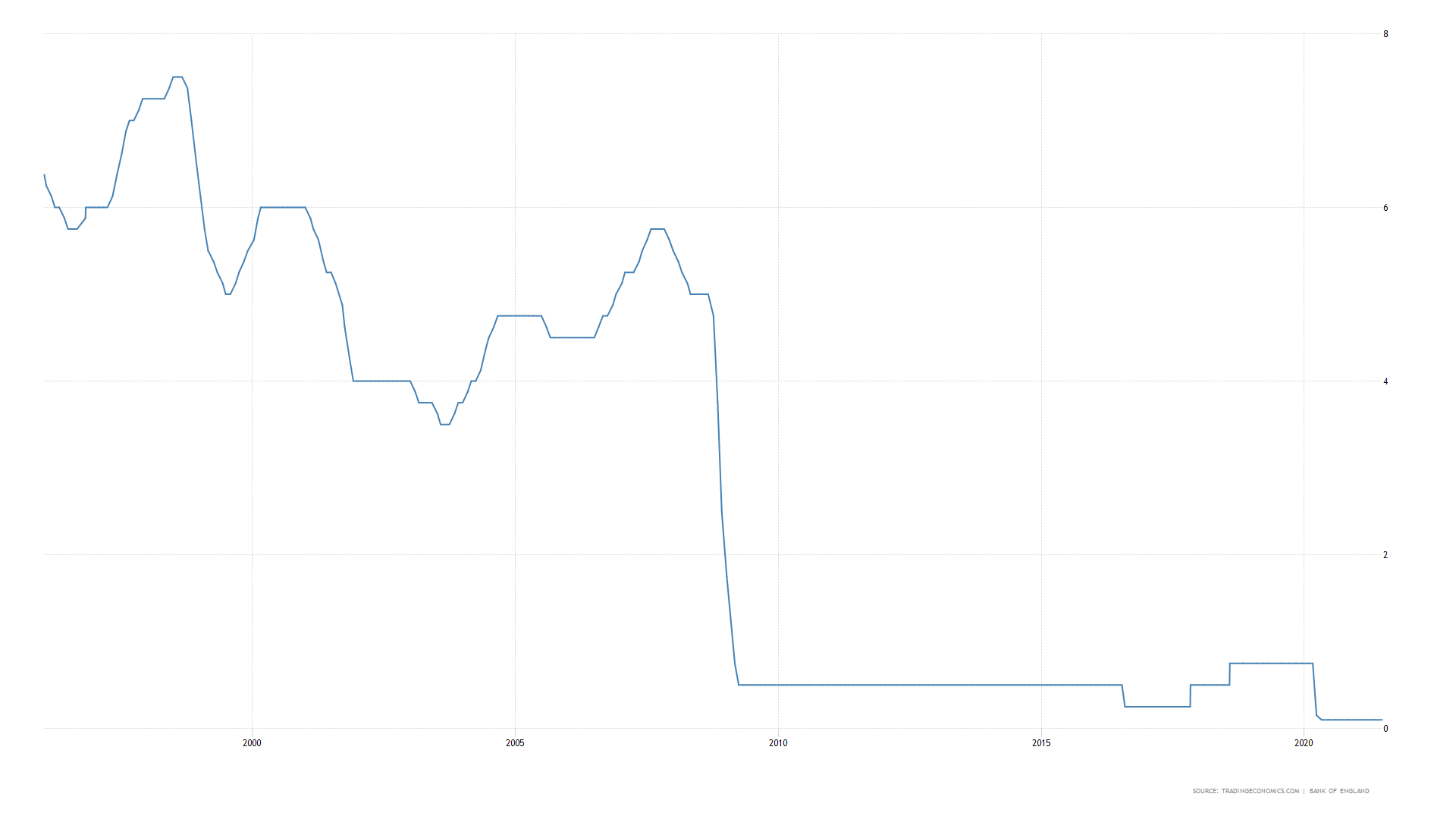Weekly Investing Idea


Banks are some of the first companies to suffer during a financial crisis, but they also must navigate new regulations and best practices which are regularly imposed on them.
Traditional banking is also up against FinTech so will have to adapt to the new world and that includes the introduction of blockchain and working with Central Banks who want their own digital currency.
Banks have lurched from one financial crisis to another and had to deal with compensation claims and fines these last 10 years. Now with Basel 3 regulations ensuring that capital leverage ratios are in place, the banks are finding it harder to expand their lending along with having to deal with negative and zero interest rates. Yet through all this, the banks are continuing to generate massive profits and will be on the radar of many savvy investors.


Back in October 2008, several Governments which included the UK Government, announced a comprehensive package of support for the financial system following the collapse of Lehman Brothers. This financial package intended both to support stability of the banking system and to protect savers and depositors. By November 2008, in its Pre Budget-Report, the UK Government declared a far-reaching fiscal stimulus package to support the wider economy, businesses, homeowners and consumers. The main aim was to recapitalise the banking system significantly by increasing the capital ratios of the major banks and provided them with a large enough buffer to withstand the challenging underlying economic conditions. On the 19th of January 2009, the Chancellor Alistair Darling announced the Government’s intention to set up an asset purchase programme to further support the failing financial system as the Great Financial Crisis brought everything crashing down.
Banks make their revenue by providing and earning interest from loan creation such as mortgages, auto loans, business loans, and personal loans. When they have created the money, that customer money then makes its way into the banking system as deposits. To cover the interest rate, they’re willing to pay-out to the savings accounts, the banks go out and purchase an interest paying asset like a UK Gilt or US Treasury.
Roll on a decade later and the world once again falls into turmoil, this time because of a global pandemic. On the 19th of March 2020, the Bank of England’s Monetary Policy Committee agrees to expand the Central Banks, Asset Purchase Facility with a £200 billion increase to £645 billion.


The Bank of England’s monetary policy has resulted in keeping the short-term fixed income rates lower as yields drop on demand for Gilts etc. They have also reduced the benchmark rate down to 0.1% and for the last 16 months have voted unanimously to keep its official bank rate on hold at a record low of 0.1%. Following on from the FOMC, the BoE currently intend to keep monetary policy as is, at least until there is clear evidence that significant progress is being made in eliminating spare capacity and achieving a sustained 2% inflation target. Currently inflation is up at 2.5% but the central bankers believe this to be transitory.


One of the UK’s biggest retail and commercial banks is Lloyds Bank plc (LLOY). Lloyds shares trade on the London Stock Exchange as part of the FTSE100 but in the past the bank was bailed out by the UK government during the financial crash. This money has since been repaid and the UK government did relatively well out of its investment.


Lloyds Banking Group (LLOY) is expected to post a second quarter adjusted profit before tax of £1.45bn and a CET1 of 16.6% this Thursday (29/07/21) with their 7.00am news release. There will be a 9.30am presentation to analysts and institutional investors. The Group delivered a solid financial performance in the first quarter, reflecting business momentum and improved economic outlook.
In the past, income investors and shareholders have liked holding Lloyds within their portfolio as the bank traditionally paid a good dividend and this earnings report will be highly anticipated, as it comes in hot on the heels of the Bank of England’s move to ditch the remaining “guardrails” on shareholder pay-outs in the sector. Though, the groups Chief Executive Charlie Nunn, maybe reluctant to change too much too soon. The Bank of England forced the banking sector to suspend dividend pay outs to ensure the banks had enough capital on hand to support the economy during the pandemic.
As for the dividend forecasts for Lloyds shares, the consensus forecast for 2021 is currently for a yield of 5% but that was on expectations of a June 2021 re-opening of the UK economy and a boost in economic spending. The ‘Freedom Day’ came a month late so there hasn’t been enough data to suggest how well consumer spending is going and the bank will have lost revenue potentially from the decline in mortgage approvals from February, with analysts predicting a deceleration in the housing market when the stamp duty holiday ends at the end of September 2021.
Warren Buffett is an enthusiast of bank stocks. The legendary billionaire investor has invested quite extensively in this industry. For Buffett bank stocks enjoy many good investing attributes. They serve an important societal need, and the business models are relatively simple to understand. Third, despite the health of many banks improving dramatically since the 2008 financial crisis, some companies are trading at a bargain still, making them ripe for buying now.
See real-time quotes provided by our partner.
The UK FTSE350 Banking index and the US XLF financial ETF have the same shape to them. Over the last 12 months the rise in the financial sector has been good, with those commercial banks holding treasuries enjoying the rising yields on their holdings. That said the last quarter has seen a dip in yields as inflation fears have subsided.
Looking at the XLF chart, the daily 200 period exponential moving average is some way below which is likely to be a target for anyone currently shorting the financial stocks. However, for those that follow the trend this could be a consolidation period before the next pop higher.
See real-time quotes provided by our partner.
Individual stocks are likely to get a boost ahead of their earnings reports as investing in a dividend paying stock only requires you to hold just ahead of the release. That said, the pullback towards the daily 200 ema on the Lloyds chart (above) is looking likely to be finished, with recent momentum being good enough to get price above the previous day’s highs and likely to get a close above the 20 and 50 ema’s.
See real-time quotes provided by our partner.
Assuming the earnings report and investor call is as bullish as analysts predict my preferred way to get in on a trade with LLOY would be to wait for a break of the descending channel before buying. There is likely to be a bit more of an up move into earnings and then a case of Buy the rumour sell the news going on, but the dip would be a good opportunity to instigate or add a trade. 48.29 for me would be the magic number as that breaks the previous swing high and is the start of a technical bull move.
© 2020 YouTrading UK - Leaders in Trader Training.
| Cookie | Duration | Description |
|---|---|---|
| __cfduid | 1 month | The cookie is used by cdn services like CloudFare to identify individual clients behind a shared IP address and apply security settings on a per-client basis. It does not correspond to any user ID in the web application and does not store any personally identifiable information. |
| _wpfuuid | 11 years | This cookie is used by the WPForms WordPress plugin. The cookie is used to allows the paid version of the plugin to connect entries by the same user and is used for some additional features like the Form Abandonment addon. |
| cf_use_ob | This cookie is set by the provider Cloudflare content delivery network. This cookie is used for determining whether it should continue serving "Always Online" until the cookie expires. | |
| cookielawinfo-checbox-analytics | 11 months | This cookie is set by GDPR Cookie Consent plugin. The cookie is used to store the user consent for the cookies in the category "Analytics". |
| cookielawinfo-checbox-functional | 11 months | The cookie is set by GDPR cookie consent to record the user consent for the cookies in the category "Functional". |
| cookielawinfo-checbox-others | 11 months | This cookie is set by GDPR Cookie Consent plugin. The cookie is used to store the user consent for the cookies in the category "Other. |
| cookielawinfo-checkbox-advertisement | 1 year | The cookie is set by GDPR cookie consent to record the user consent for the cookies in the category "Advertisement". |
| cookielawinfo-checkbox-necessary | 11 months | This cookie is set by GDPR Cookie Consent plugin. The cookies is used to store the user consent for the cookies in the category "Necessary". |
| cookielawinfo-checkbox-performance | 11 months | This cookie is set by GDPR Cookie Consent plugin. The cookie is used to store the user consent for the cookies in the category "Performance". |
| viewed_cookie_policy | 11 months | The cookie is set by the GDPR Cookie Consent plugin and is used to store whether or not user has consented to the use of cookies. It does not store any personal data. |
| Cookie | Duration | Description |
|---|---|---|
| YSC | session | This cookies is set by Youtube and is used to track the views of embedded videos. |
| Cookie | Duration | Description |
|---|---|---|
| _ga | 2 years | This cookie is installed by Google Analytics. The cookie is used to calculate visitor, session, campaign data and keep track of site usage for the site's analytics report. The cookies store information anonymously and assign a randomly generated number to identify unique visitors. |
| _gid | 1 day | This cookie is installed by Google Analytics. The cookie is used to store information of how visitors use a website and helps in creating an analytics report of how the website is doing. The data collected including the number visitors, the source where they have come from, and the pages visted in an anonymous form. |
| Cookie | Duration | Description |
|---|---|---|
| _fbp | 3 months | This cookie is set by Facebook to deliver advertisement when they are on Facebook or a digital platform powered by Facebook advertising after visiting this website. |
| fr | 3 months | The cookie is set by Facebook to show relevant advertisments to the users and measure and improve the advertisements. The cookie also tracks the behavior of the user across the web on sites that have Facebook pixel or Facebook social plugin. |
| IDE | 1 year 24 days | Used by Google DoubleClick and stores information about how the user uses the website and any other advertisement before visiting the website. This is used to present users with ads that are relevant to them according to the user profile. |
| test_cookie | 15 minutes | This cookie is set by doubleclick.net. The purpose of the cookie is to determine if the user's browser supports cookies. |
| VISITOR_INFO1_LIVE | 5 months 27 days | This cookie is set by Youtube. Used to track the information of the embedded YouTube videos on a website. |
| Cookie | Duration | Description |
|---|---|---|
| _gat_UA-42160853-2 | 1 minute | No description |
| cf_ob_info | No description | |
| CONSENT | 16 years 8 months 3 days 6 hours 2 minutes | No description |